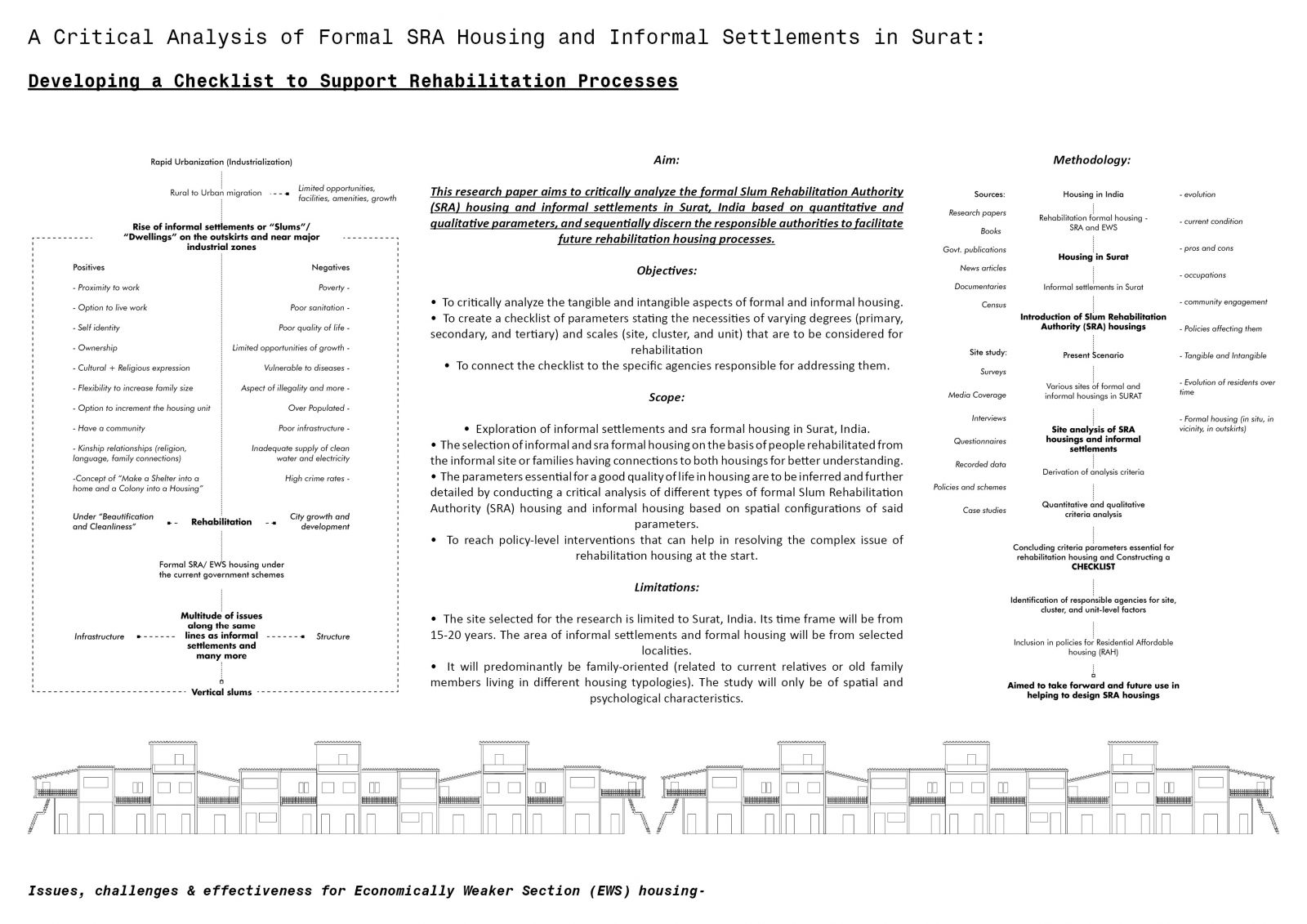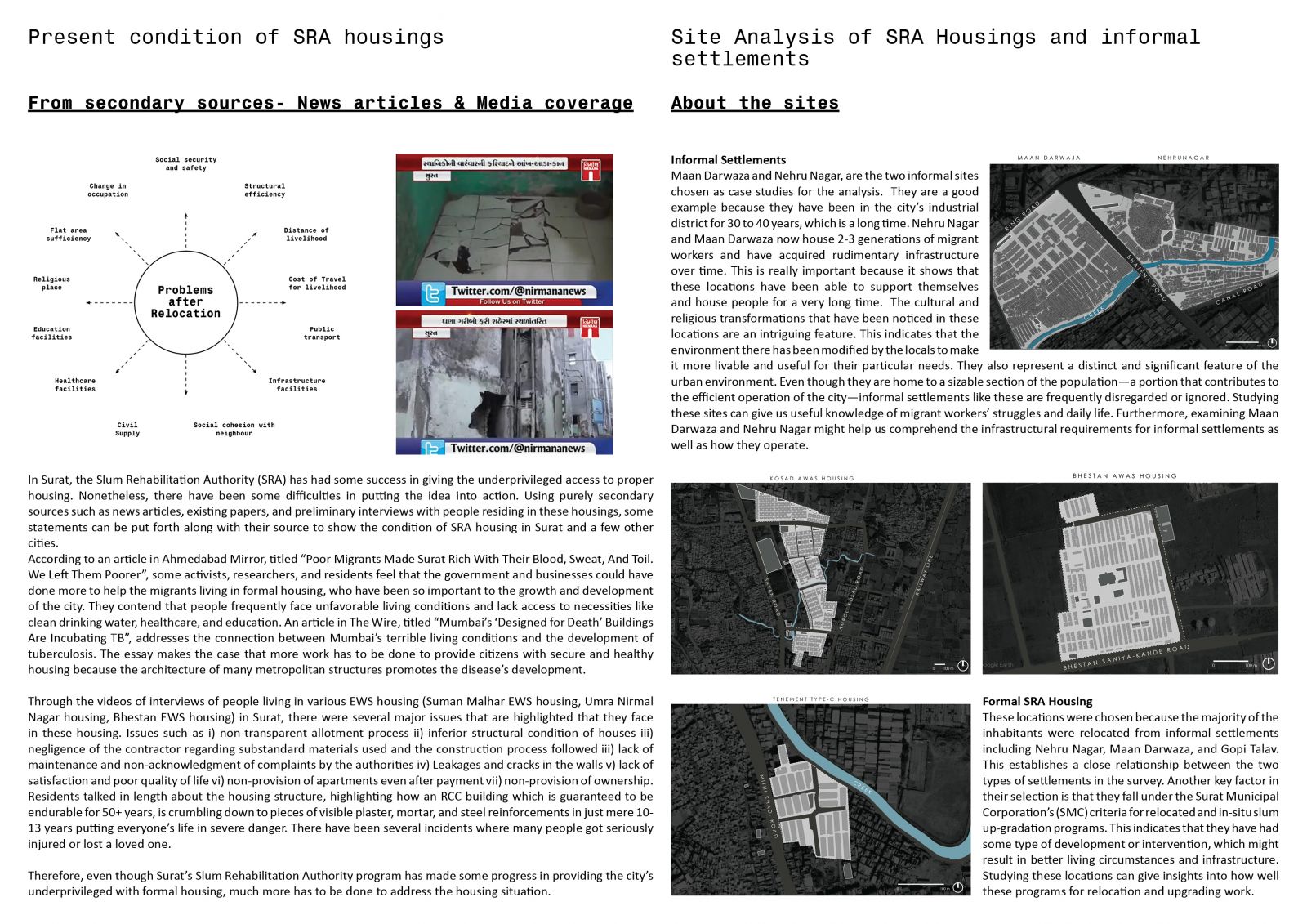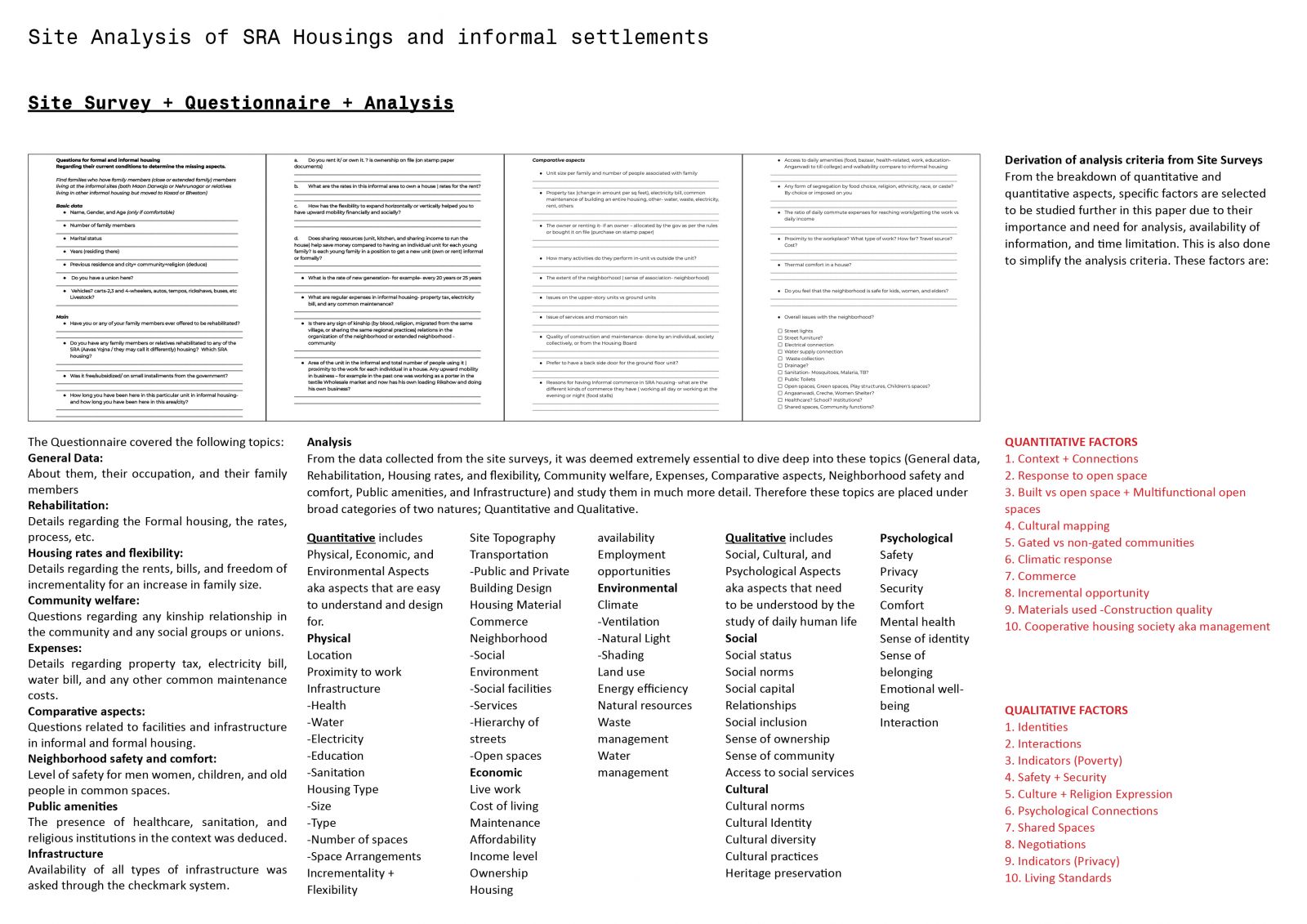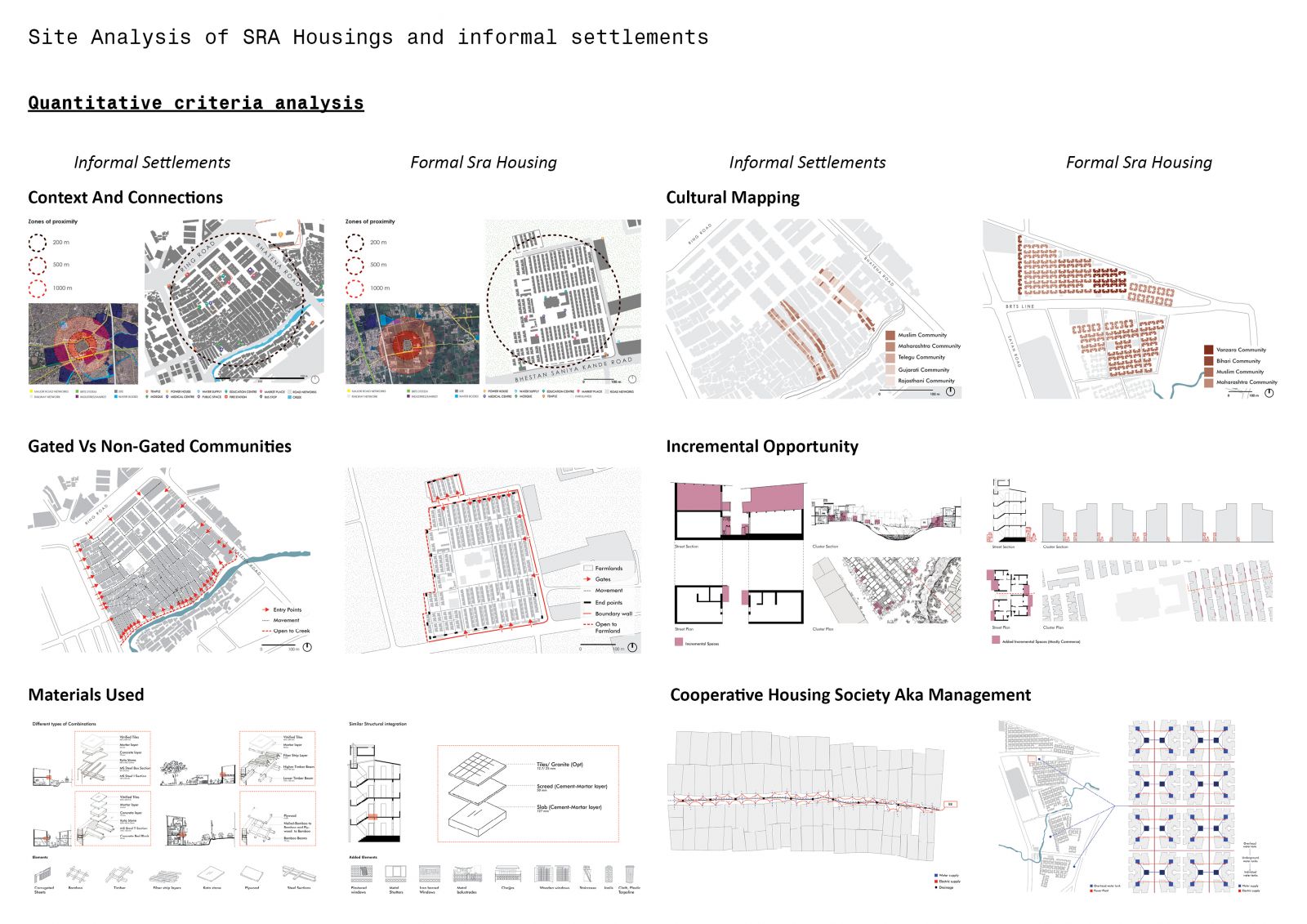Your browser is out-of-date!
For a richer surfing experience on our website, please update your browser. Update my browser now!
For a richer surfing experience on our website, please update your browser. Update my browser now!
This research paper aims to critically analyze the formal Slum Rehabilitation Authority (SRA) housing and informal settlements in Surat, India based on quantitative and qualitative parameters, and sequentially discern the responsible authorities to facilitate future rehabilitation housing processes. Despite the poor infrastructure and living conditions in informal settlements, a large population of India still lives there. The need for people to find housing close to their place of employment has led to an increase in informal settlements, or “slums,” in India. They have no choice but to live in informal settlements because renting or purchasing an apartment in a city is extremely expensive. When informal settlements started, residents transformed these mere shelters into houses and colonies into housing communities. This was achieved by aspects such as proximity to the workplace and education, affordable shelter options, the ability to create one’s own identity through building a home, maintaining kinship relations, having live-work options, having the ability to increment, sharing common utilities with a joint family, fostering cultural and religious beliefs and having support groups of people who migrated from the same geographical area. The government established SRA housing to address the issue of slums, which succeeded at first, due to its immense need from rapid urbanization and subsequent increase in population in cities. The importance was given to speed, uniformity, less cost, and modular form which was beneficial at the time but now has created an inextricable loop as these housing initiatives failed to address the drawbacks of informal living while retaining its benefits. These projects sacrificed location, standards necessities, and systematically segregated communities to keep costs down, regrettably making these buildings "vertical slums." To understand the needs and complexity of people, three formal housing sites and two informal dwelling sites in Surat were chosen for critical spatial analysis. Through this study, criteria of qualitative and quantitative nature are inferred. These parameters serve as the foundation for a checklist that can assist in future SRA projects. This checklist is further decoded and connected to the specific agencies which are responsible for addressing them. Additionally, these parameters can also be included in policies under Residential Affordable Housing (RAH) to ensure better follow-ups by developers.







